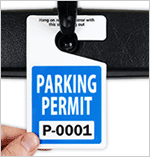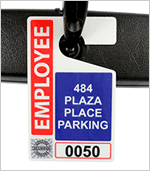How police’s reporting biases impact crash data
Crash data is often mistaken for fact, but reporting bias may affect the data even more significantly than experts have already assumed. A new study from Kibrom A. Abay of the Department of Economics at the University of Copenhagen aims to investigate by analyzing the “nature, and impact of the reporting bias associated with the police-reported crash data on inferences made using this data.” The study addresses emergency room data as well as police-reported crash data for a particular area in Denmark.

Reporting bias means Danish police are underreporting crash casualties. Image from Jens Rost.
The study, “Investigating the Nature and Impact of Reporting Bias in Road Crash Data,” aims to “to disentangle potentially common observable and unobservable factors that affect drivers’ injury severity risk and their crash reporting behavior” — in other words, to sift reality from commonly-accepted interpretations by developing a model that takes into account both injury severity risk and the propensity to report a crash.
The study found that there is “substantial” reporting bias in the frequently-used police-reported crash data. One such startling discovery: Estimates founded on police-reported crash data “underestimate the effectiveness of seat belt use in reducing drivers’ injury severity risk.” Though most studies rely on police-reported crash data, the study notes, and there is a consensus that the bias does exist, there are few detailed analyses of precisely how biased those reports are.
For example, it is largely accepted that crashes resulting in minor injuries are less likely to be reported to the police, while the crash-reporting rate for crashes resulting in fatal injuries is “expected to be fairly high.” But, as the study notes, “if not accounted properly, [such an assumption] leads to biased estimates and erroneous inferences on the effects of different safety measures on the crash outcome of road users.”
The largest challenge in identifying both the type of bias and the results of that bias is that police-reported crash data is usually the only source of crash data. This study analyzed emergency room data to “fill this gap” and to serve as an “objective and professional measure of injury severity.” The study’s model accounted for both observable and unobservable factors when identifying injury severity risk and the propensity to report crashes to the police. (You can check out the study in its entirety online for more technical data and the modeling used.)
Technical modelings aside, the study’s most significant takeaway is this: Police-reported crash data is biased in nature, but it is also the predominant source of information for safety planners and other decision-makers. Without seeking out supplementary information such as emergency room data and “investigating and characterizing the reporting behavior of drivers,” this bias can result in potentially dangerous, “mislead[ing] public road safety policy measures.”
Intrigued and want to learn more? Some of the related research cited in this study includes the following studies:
Exploring factors contributing to injury severity at freeway merging and diverging locations in Ohio
A Methodology for Estimating Exposure-controlled Crash Risk Using Traffic Police Crash Data
The joint analysis of injury severity of drivers in two-vehicle crashes accommodating seat belt use endogeneity
Related Posts
Category: Enforcement, Traffic management




















